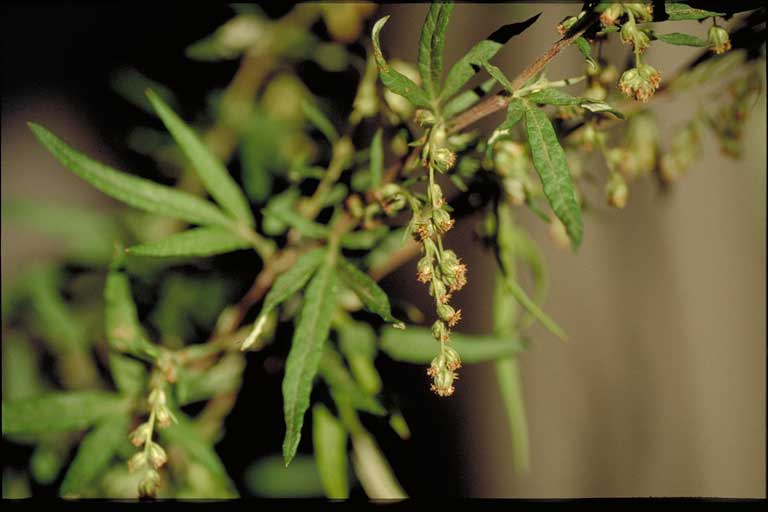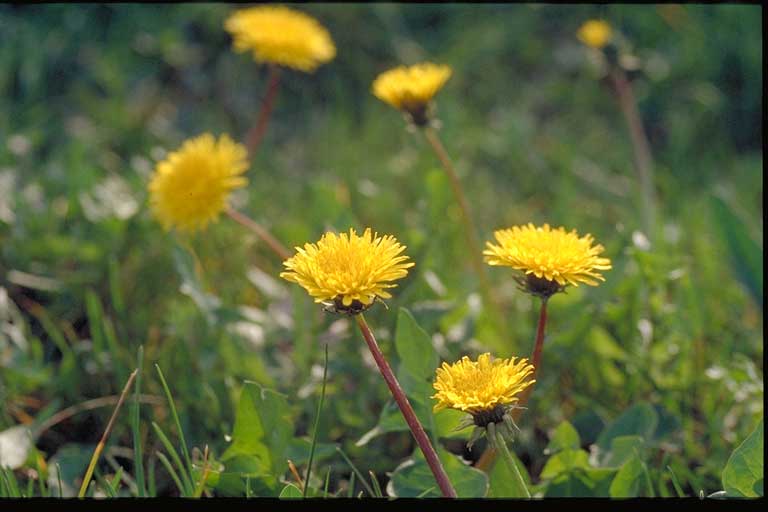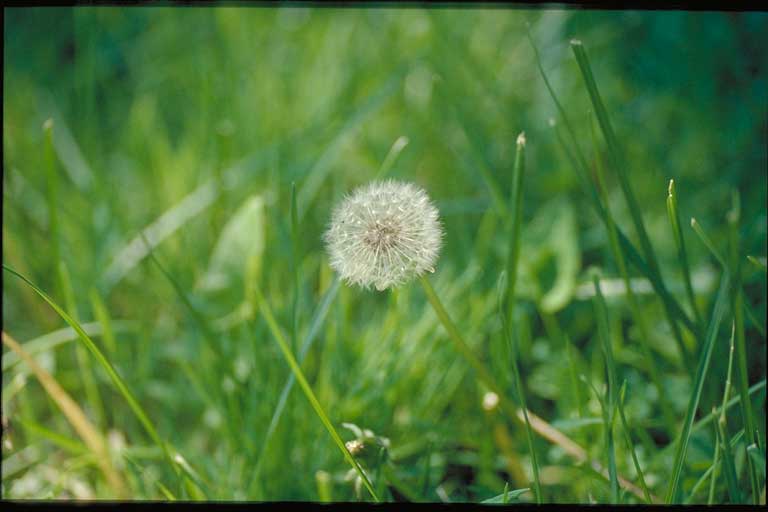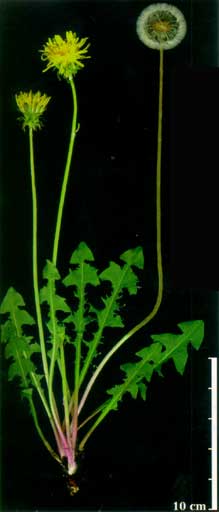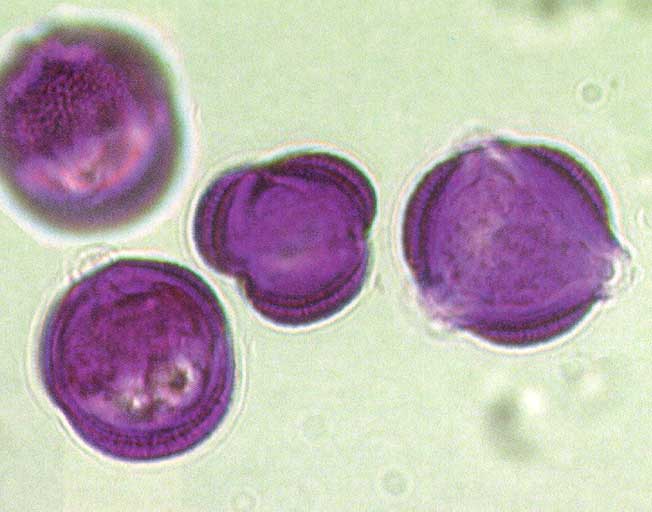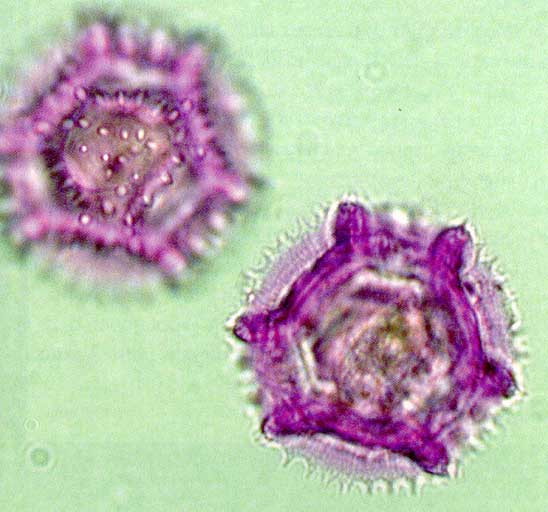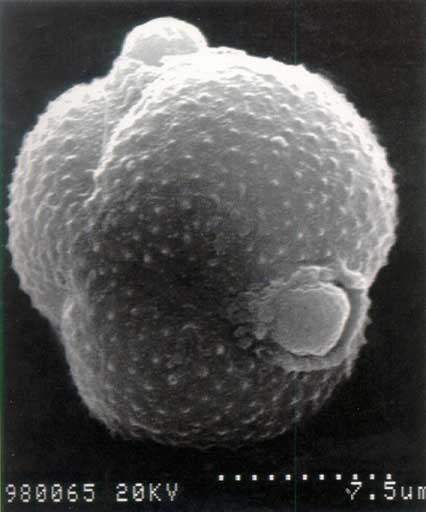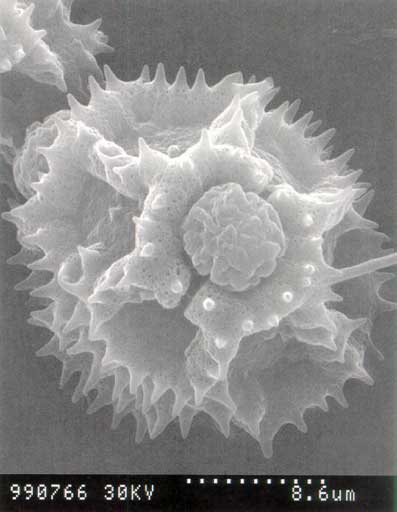Compositaceae
This family includes more than 1,000 genus, and 20,000 different species, and even though it is possible to detect its presence in almost every environment, it is more prominent in tropical and subtropical zones with low-density forests. Within this family finds plants such as Dandelion, Chrysanthemum, Sunflower, Lettuce, Camomile, Tarragon, Ragweed, Mugworth, etc.

Artemisia *
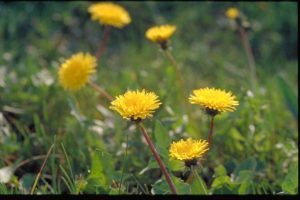
Dandelion*
Mugworth (Artemisia vulgaris) is the most important Compositaceae in Spain, and in Europe. It is an herbaceous plant very plentiful in gutters, uncultivated fields, edges of brooks, etc.
Artemisia’s pollen is spheroidal, with a diameter of 18-24 µm, with an aspect of three half-moons, and a finely granulated surface. It flowers from the end of July through November/December.
Dandelion (Taraxacum Officinale) It is a perennial plant, that flowers and pollinates from Spring to Fall. It has a very characteristic medium size pollen (32-37 µm in diameter), with large window-like openings , with a spiculated surface.
Compositaceae can produce respiratory allergies (Rhino-conjunctivitis or Asthma). But they can also be responsible (at least partially) for cross-reactions with foods. Therefore an Artemisia-Celery-Carrot-Spices Syndrome, has been described whereby patients can also complaint for oral symptoms (itchy mouth, swelling of the lips or the tongue, etc) or gastrointestinal symptoms when they eat celery, carrots, or some spices. Associations have also been found between allergy to Artemisia pollen, and allergy to mustard, French beans, legumes, hazelnut, and kiwi.
** Photos (c) Menarini, S.A. – Hospital Clínico de Barcelona


